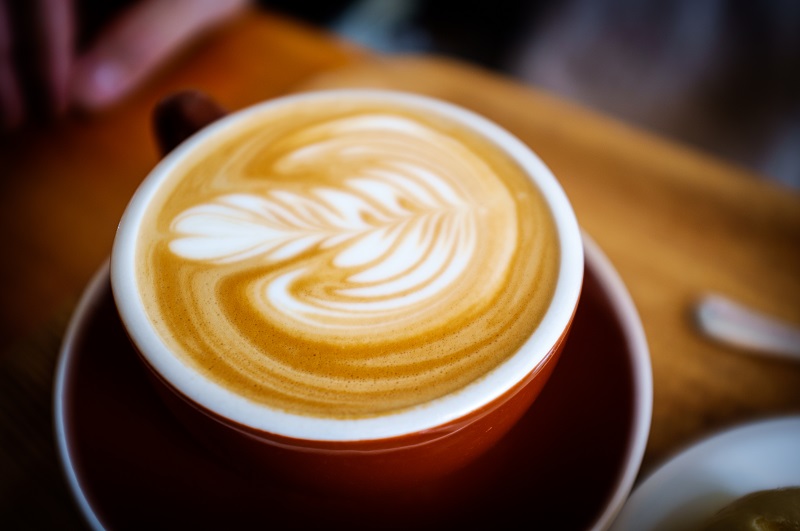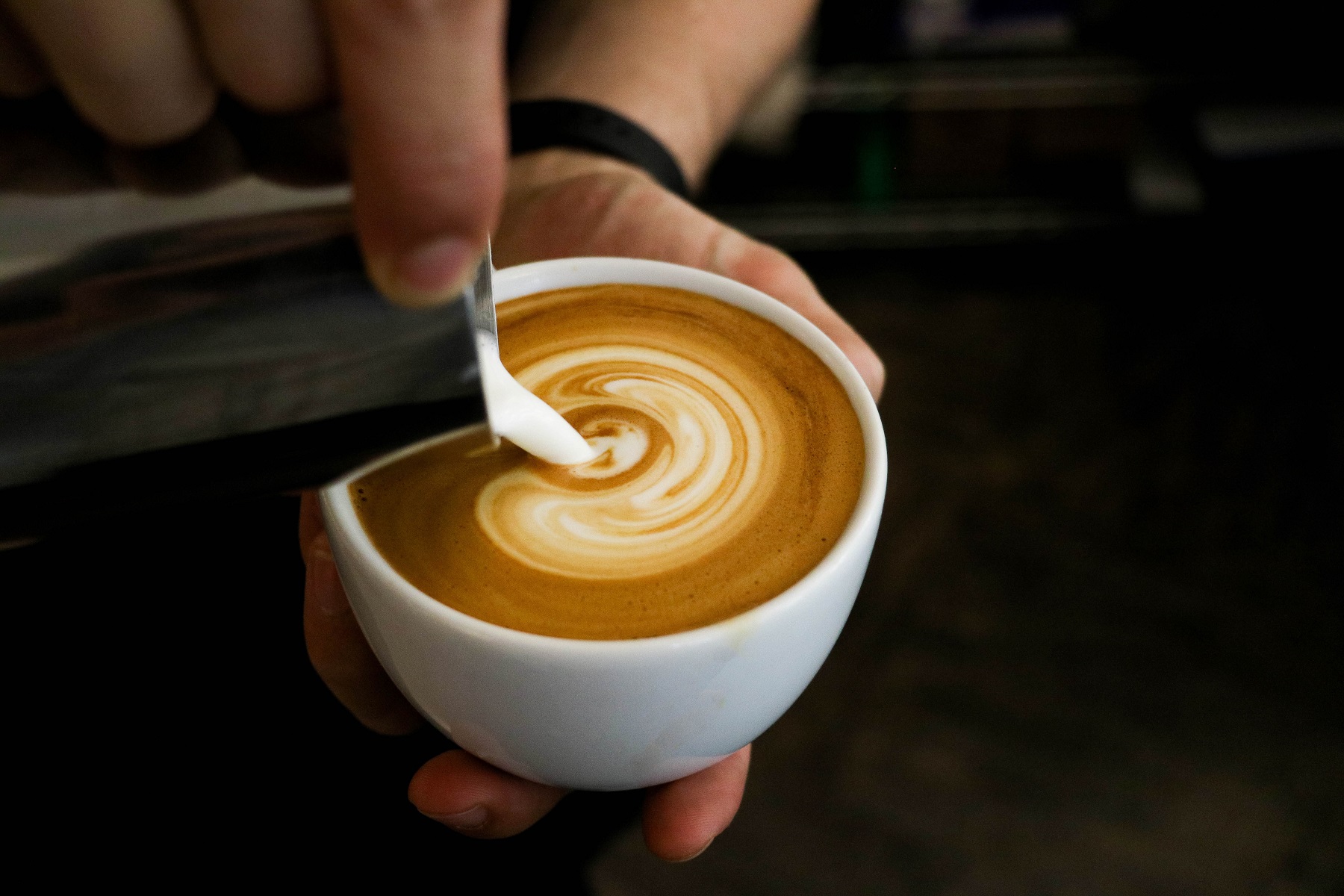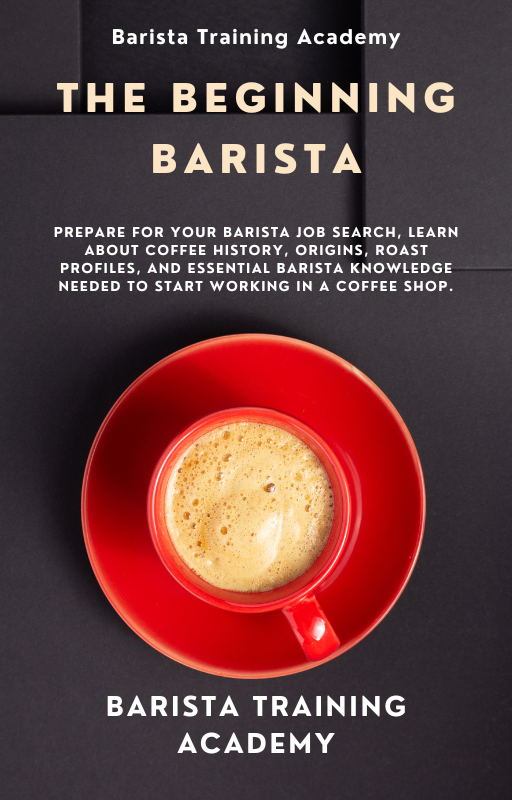Online Barista Training: Milk Steaming and Drink Building
Being a barista is so much fun! You get to work with one of the best, most widely consumed agricultural products in the world – coffee. And you get to have fun doing it! There are a few main things to consider when you become a barista. When it comes to making and serving coffee, you will be working with primarily three main ingredients: coffee, milk, water.
Today we will focus on milk and milk steaming.
In this online barista training article, you will learn the basic milk steaming techniques and know the differences among the most common espresso-based drinks.
Today, we will discuss the notion of milk in our coffee. If you are a coffee drinker, you know how important milk can really be to a coffee drink. Sometimes the type of milk and the fat content can impact the taste.
Most coffee shops in the United States use whole milk as a default serving choice. Of course, there might be other options in your coffee shop if the customer request 2% milk or even milk substitute such as almond milk, rice milk, etc. For now, let's stay focused on the idea of using whole milk.
Online Barista Training: Milk Steaming
Milk steaming is necessary to foam and heat the milk before adding it to the espresso shot. It would help if you learned how to steam your milk to pour great lattes and cappuccinos. When steaming your milk, you need to listen to the sound your milk makes. The loud paper-tearing sound means you are adding hot air to your milk and creating microfoam. You should avoid large air bubbles – if you see some appearing break them by adding more air and creating a whirlpool of milk.

Online Barista Training: There are 10 steps to steam the milk for a coffee beverage:
- Purge the steam wand. (This ensures it's clean and free of any milk debris)
- Grab the appropriately sized pitcher for your coffee beverage.
- Pour the milk into the pitcher and return the milk into the fridge. Submerge the tip of the wand into the milk.
- When you start steaming, make sure the wand is fully submerged. Move it towards the surface until it stops making noise. Froth the milk by steaming close to the surface. Leave the wand directly at the top so it can pull in the surrounding air to create foam.
- Use smooth motions, avoid any jumping movements, and create a whirlpool in the milk.
- When you create the desired amount of foam, dip the wand just below the surface to start heating the milk. The wand will pull in the milk instead of air and circulate the foam towards the bottom. Continue heating milk until it's 140F.
- Turn off the steam. The milk will continue heating till about 150F.
- If you did everything correctly, there wouldn't be any large bubbles on the milk. If there are bubbles, knock them out on the counter. You may also need to swirl the pitcher. You want the consistency to be that of glossy white paint. Then serve.
- Rinse the pitcher with cold water in the sink or with the pitcher rinser.
- Purge the wand and wipe it clean with a wet towel.

There are some coffee drinks that you'll be preparing more often than others, so it's a great idea to learn about them right now with the help of this online barista training course.
Cappuccino vs. Latte
These are the two most common espresso-based drinks. These drinks are made with the same espresso and milk base but with a few important differences.
A cappuccino contains more foam, about 2/3 of milk, while a latte contains only half an inch of foam on the top.
Latte can also contain different syrups. Cappuccinos don't usually have syrup as you don't want it to mix up with the foam.
When making a latte, you should pull the espresso straight into the syrup. Then steer syrup and espresso shot by pouring the milk so that it's evenly mixed.
Americano
Americano doesn't contain milk. It is two shots of espresso with hot water. First, you add the hot water, then pour the espresso shot over the water.
Iced latte
The iced latte is made similarly to a common latte, but only with cold milk and ice. First, pour the espresso into the milk. Then pour the ice, so it doesn't melt. Stir with the syrup.
Specialty coffee drinks
Specialty drinks are made similarly to lattes and cappuccinos. Every coffee shop usually has its own specialty or signature drink. They contain various additions and syrups. For example, a mocha has chocolate syrup and cream on top.
Another example is a white chocolate raspberry swirl, which contains white chocolate syrup and raspberry syrup and cream on top.
Blended drinks
The process of creating blended drinks starts with filling a cup with ice. Next, pour a blended beverage base until it just covers the ice. Add the syrup or other additions according to the drink recipe. Add the espresso shot and then blend.
Online Barista Training: Latte art
Latte art is not mandatory, but it'll show your skills as a barista – and it's a lot of fun and very appealing to your customers. The customers are always happy to get a cappuccino with nice latte art on top of it. Our special article read about latte art techniques and the step-by-step guide of creating different types of latte art.
This has been a brief overview of milk steaming. For more information on how to properly steam and pour milk for your coffee beverage, visit our blog.

Brought to you by Barista Training Academy, “The Beginning Barista,” Your Ultimate Prep Guide to Getting Your First Job as a Barista” is an ultimate resource that is available online and is affordable for anybody who is looking to start a career in the coffee industry. For more information, visit our blog.
